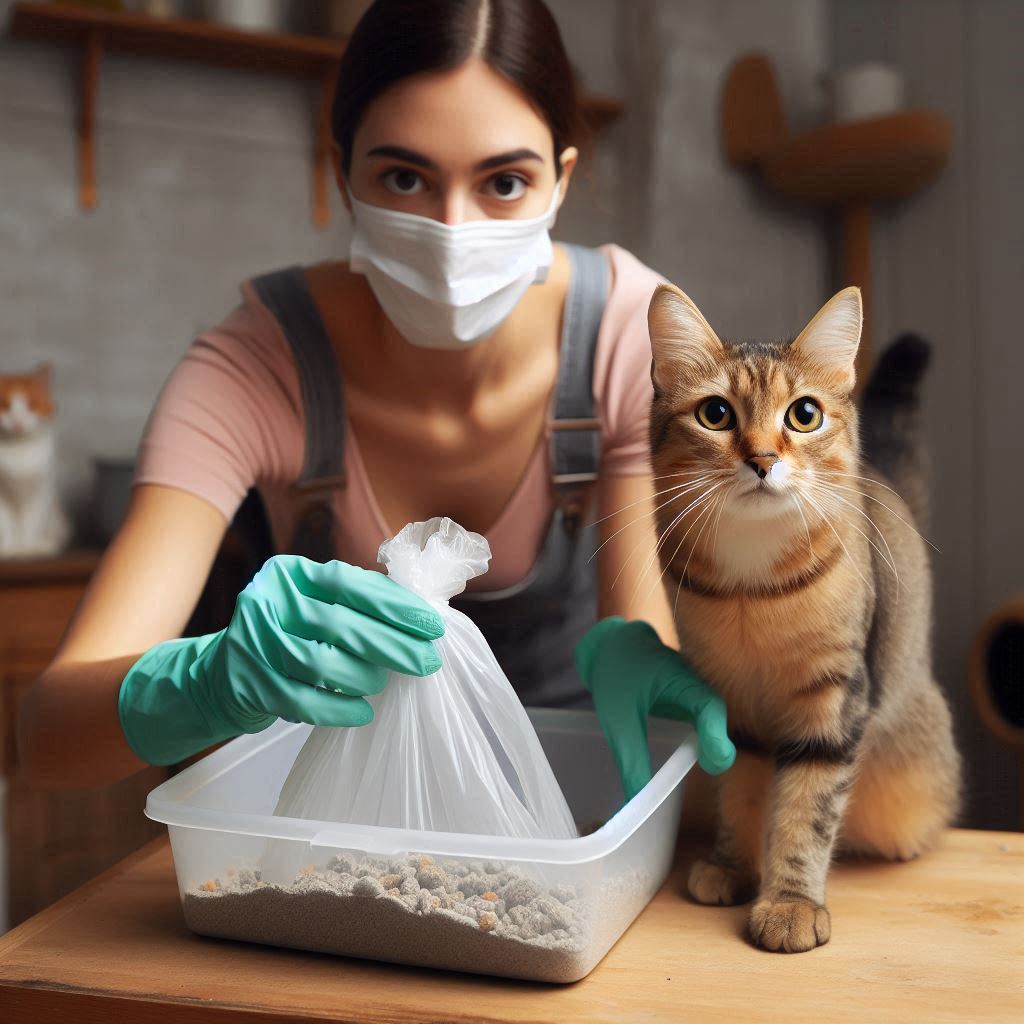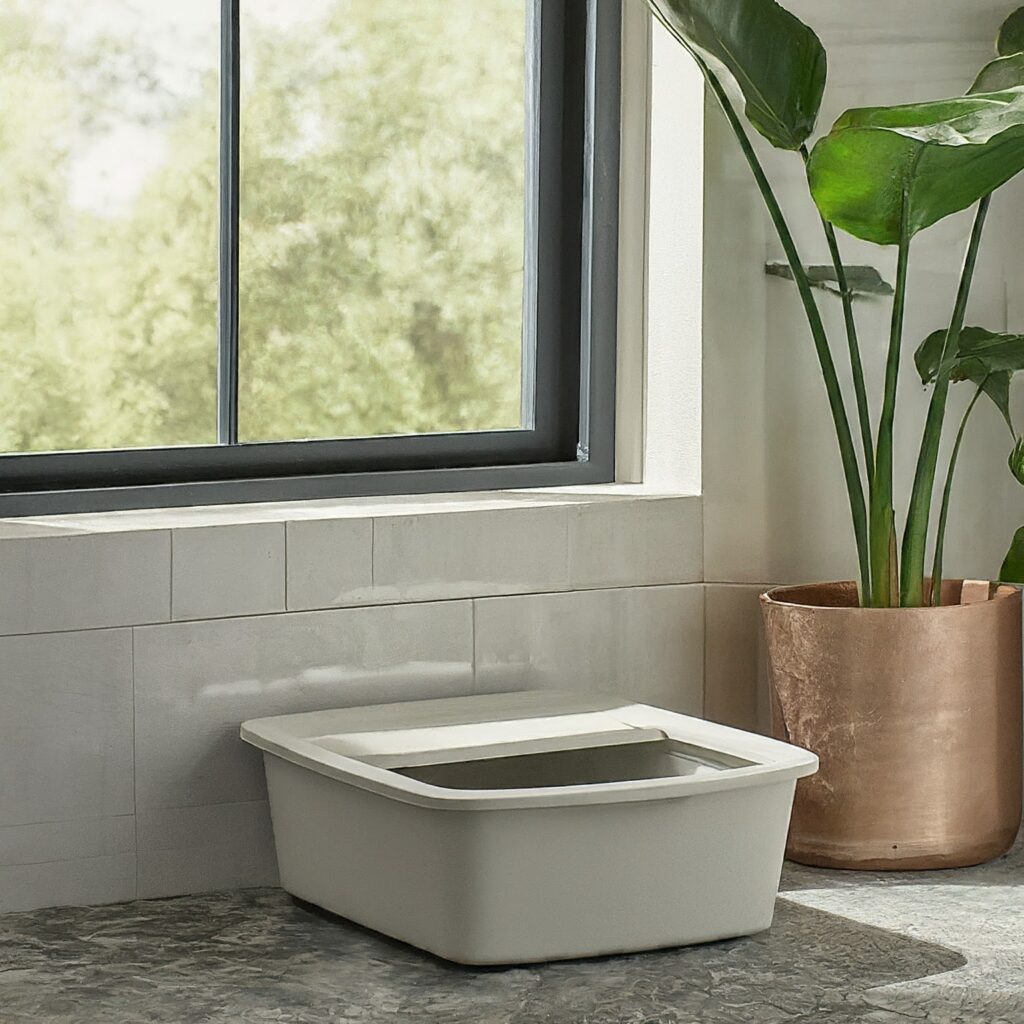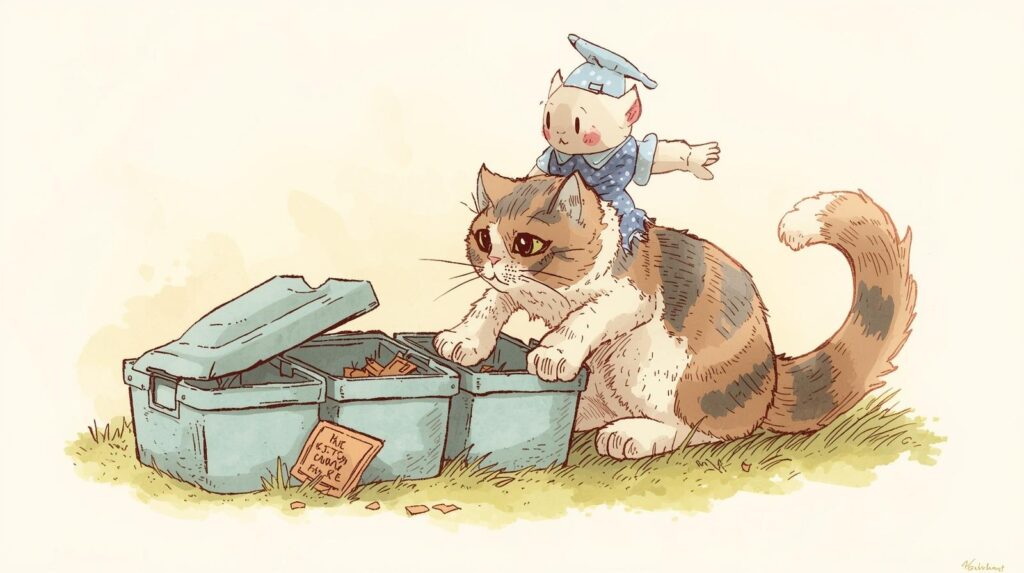If you’re a cat parent, one task you’ll quickly learn is how to empty and clean the cat litter box properly. While it may seem straightforward, maintaining a clean litter box requires some know-how to ensure your cat stays healthy and happy—and your home remains fresh. In this blog, we’ll walk you through a step-by-step process to empty, clean, and maintain a litter box, as well as offer tips on odor control, disposal, and how to make the process easier.

Let’s dive into everything you need to know about cleaning a cat litter box effectively.
Why Cleaning the Litter Box is Important
Cats are naturally clean animals, and a dirty litter box can cause several issues. Not maintaining the box can lead to:
- Health Problems: Unclean litter boxes harbor bacteria, leading to urinary tract infections (UTIs) and other health issues in cats.
- Behavioral Issues: Cats may avoid the litter box if it’s too dirty, leading to accidents around the house.
- Odor Problems: A neglected litter box can produce strong odors that can spread throughout your home.
Emptying and cleaning the box regularly will not only keep your cat healthy but also maintain a hygienic environment in your home.
Also read: How Long Can Cats Go Without a Litter Box? Understanding Your Cat’s Needs
How Often Should You Empty the Cat Litter Box?
The frequency of cleaning depends on a few factors:
- Type of Litter: Clumping litters may only require scooping daily and a full change every 1-2 weeks. Non-clumping litter, however, needs more frequent changes.
- Number of Cats: Multiple cats mean more frequent cleaning. Aim to scoop the litter box at least once per day and perform a full litter change every 5-7 days.
- Size of the Litter Box: A larger litter box holds more litter and waste, requiring fewer complete changes. Smaller boxes need more frequent attention.
Step-by-Step Guide: How to Empty and Clean a Cat Litter Box
1. Gather the Supplies
Before you start, make sure you have the right tools to make the job easier.
- Scooper: A sturdy scooper with holes for sifting litter.
- Trash Bags: Use heavy-duty bags to prevent leakage.
- Gloves: Protect your hands while cleaning.
- Mask (Optional): Helpful if you are sensitive to dust or odors.
- Litter Mat: Placed outside the box to trap litter particles.
- Cleaning Solution: Use a pet-safe cleaner or a vinegar-water solution for disinfecting.
- Fresh Litter: Replace the old litter with clean, fresh litter.
Also Read: 8 Reasons Your Cat Meows in the Litter Box (and What to Do About It)
2. Scoop Daily to Maintain Cleanliness
Scooping out solid waste and clumps of urine daily prevents odors and makes your cat more comfortable. Here’s how:
- Use a scooper to sift through the litter and remove waste.
- Dispose of the clumps in a lined trash bin or a waste bag. Avoid flushing cat waste, as it can clog pipes and harm water systems.
- Stir the remaining litter to even it out and refresh the surface.
Pro Tip: If you have multiple cats, scoop the litter twice a day to avoid buildup.
3. Empty the Litter Box Completely
Once every 1-2 weeks, you should empty the entire litter box to ensure it stays clean and odor-free. Follow these steps:
- Wear gloves and a mask if needed.
- Carefully dump the used litter into a trash bag. Use a scoop to help scrape out any stuck clumps.
- Tie the bag securely and place it in an outdoor garbage bin. This prevents odors from lingering inside the house.
4. Clean and Disinfect the Litter Box
After emptying, it’s essential to thoroughly clean the box. This step helps eliminate bacteria and odor.
- Rinse the box with warm water to loosen any residue.
- Scrub the interior using a soft brush or sponge with mild soap or vinegar-water solution. Avoid using harsh chemicals like bleach that could harm your cat.
- Rinse thoroughly and allow the box to air-dry completely. Dampness can trap odors or make the litter clump prematurely.
Also Read: Flammability of Cat Litter: Everything You Need to Know
5. Add Fresh Litter
Once the box is dry, add a new layer of litter.
- Use 2-3 inches of litter to allow your cat to dig and bury waste comfortably.
- Stir in baking soda to help with odor control.
- Place the box back in its usual spot, ensuring it’s easily accessible to your cat.
How to Empty Litter-Robot Models and Other Cat Litter Systems
Here’s a quick guide on how to empty various litter boxes efficiently, including the Litter-Robot 4, Litter-Robot 3, and PetSafe litter systems.
How to Empty the Litter-Robot 4
- Initiate the Empty Cycle:
- Press the “Empty” button on the control panel while the globe is in the home position with the blue light on.
- The globe will rotate clockwise, allowing all litter to fall into the waste drawer.
- Dispose of Waste:
- Pull out the waste drawer, tie the bag liner, and discard it in the trash.
- Replace the old liner with a new one, ensuring the bag fits snugly along the drawer edges.
- Reset and Refill:
- Press the “Reset” button to return the globe to the home position.
- Check the litter level, adding fresh litter if necessary to meet the fill line inside the globe.
Note: You can also monitor waste levels and receive notifications via the Whisker app if connected【24】【25】.
How to Empty the Litter-Robot 3
- Start the Empty Cycle:
- Similar to the Litter-Robot 4, press the “Empty” button to begin the rotation cycle, which will dump litter into the waste drawer.
- Empty the Waste Drawer:
- Remove the drawer, replace the full bag liner, and install a new one.
- Maintenance Tip:
- Regularly check the drawer to ensure the liner is positioned properly. Reset the system after each emptying to ensure weight sensors work correctly for the next use.
How to Empty a PetSafe Litter Box
- Remove the Litter Tray:
- For PetSafe automatic systems, simply slide out the disposable litter tray when it’s full.
- Dispose of the Tray:
- Seal the used tray in a bag and place it in the trash. For reusable versions, dump the waste and wash the tray with a pet-safe cleaner.
- Install a New Tray or Refill Litter:
- Insert a new disposable tray or refill the reusable one with fresh litter. Ensure it’s properly aligned within the unit to resume automatic cycling.
How to Empty a Cat Litter Tray
- Dump the Old Litter:
- Wear gloves, lift the tray carefully, and empty the contents into a trash bag.
- Clean the Tray:
- Wash with warm water and a mild pet-safe cleaner to eliminate odors and bacteria. Allow it to air dry.
- Refill with Fresh Litter:
- Add 2-3 inches of new litter and place the tray back in its usual location. Scoop clumps daily to maintain cleanliness.
How to Empty a Kitty Litter Genie
- Access the Liner:
- Open the top compartment of the Litter Genie and pull down the bag containing used litter.
- Seal and Remove:
- Tie the bag, cut it with the built-in cutter, and dispose of it in the trash.
- Install a New Bag:
- Pull down a new section of the continuous liner, tie a knot at the bottom, and place it inside the canister.
How to Dispose of Cat Litter Properly
Disposing of used cat litter correctly is essential for environmental and sanitary reasons. Here are some tips:
- Never flush cat litter: Litter can clog plumbing and harm marine life.
- Double-bag the waste to prevent leaks and odors.
- Use biodegradable bags if possible to reduce environmental impact.
- Compost non-clumping natural litter made from wood, paper, or corn (but only for non-toxic waste, not fecal matter).
Also read: Ultimate Guide to Managing Cat Litter for Multi-Cat Households
Tips for Odor Control
No one wants a home that smells like a litter box. Here are a few tips to keep odors at bay:
- Use an odor-absorbing litter with baking soda or activated charcoal.
- Place the box in a well-ventilated area, but away from high-traffic zones.
- Clean the litter mat regularly to remove trapped particles.
- Consider using an air purifier near the litter box to improve air quality.
- Replace the litter box annually if it becomes too scratched or retains odors.
How to Make the Process Easier
- Choose the Right Litter
Experiment with different litters (clumping, non-clumping, scented, unscented) to see what your cat prefers. A litter that your cat likes will reduce accidents outside the box. - Use a Self-Cleaning Litter Box
If you find it hard to keep up with scooping, a self-cleaning litter box can automate the process, although it still requires occasional emptying and maintenance. - Multiple Litter Boxes
If you have more than one cat, use one box per cat plus an extra. This reduces competition and ensures there is always a clean spot available. - Set a Cleaning Schedule
Regular cleaning is easier when you make it part of your routine. For example, scoop daily and empty the box fully every Sunday.
Signs It’s Time to Replace the Litter Box
Over time, litter boxes can wear out and develop scratches that harbor bacteria. Replace the box if:
- It has deep scratches that are hard to clean.
- It retains odors even after thorough washing.
- Your cat starts avoiding it, despite regular cleaning.
What to Do If Your Cat Refuses to Use the Box
If your cat is avoiding the litter box, try the following:
- Check the box location: Make sure it’s in a quiet, private area.
- Switch the litter type: Some cats are sensitive to textures or scents.
- Ensure the box is clean: Cats are picky about cleanliness.
- Consult a vet if your cat continues to avoid the box, as this could indicate a medical issue.
Conclusion
Maintaining a clean litter box is crucial for both your cat’s health and your home’s hygiene. By following the steps outlined in this guide—scooping daily, emptying the box regularly, cleaning thoroughly, and using the right litter—you can create a pleasant environment for your feline friend. With a little effort and a good routine, managing your cat’s litter box will become second nature, ensuring a cleaner home and a happier pet.


